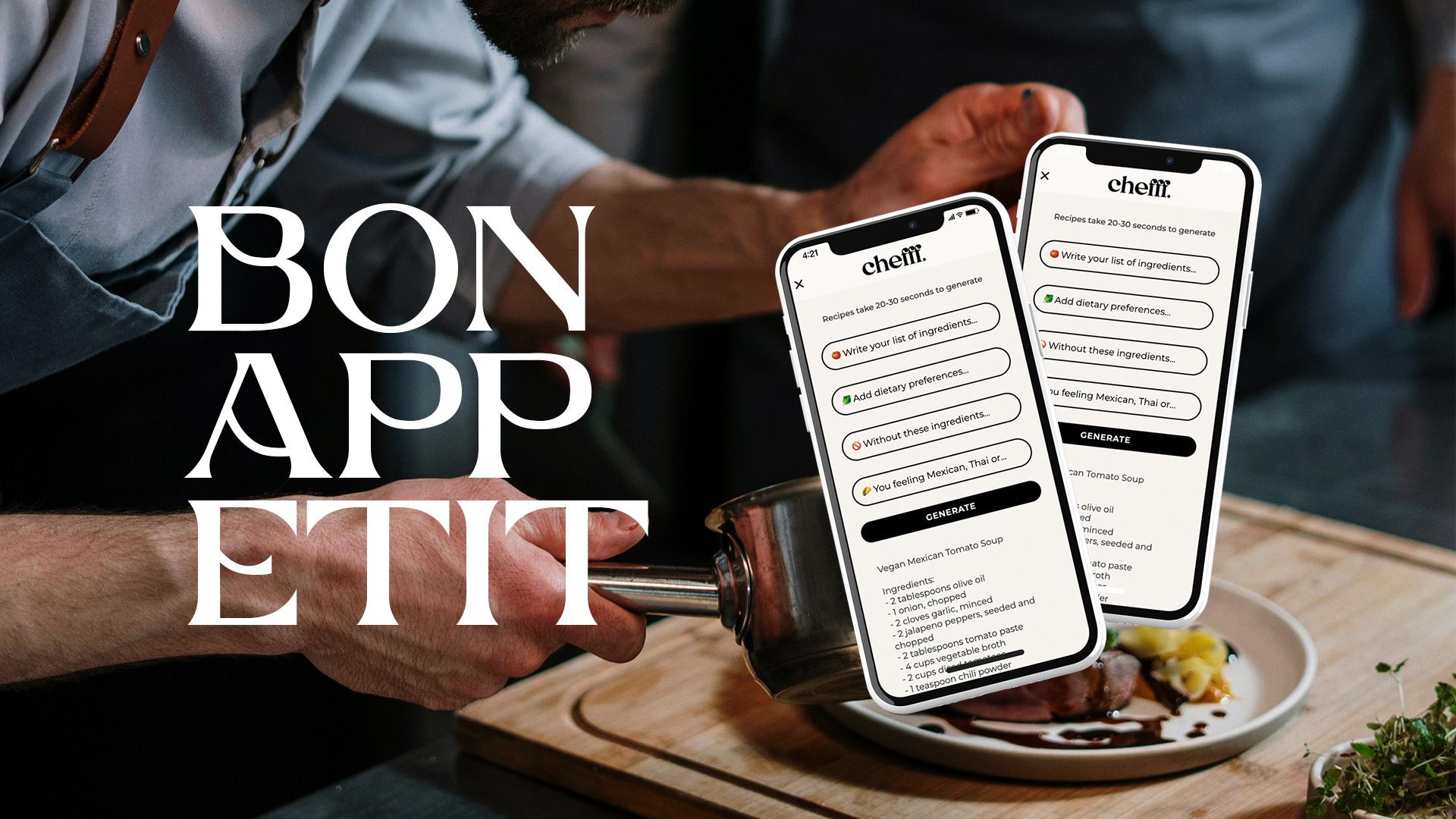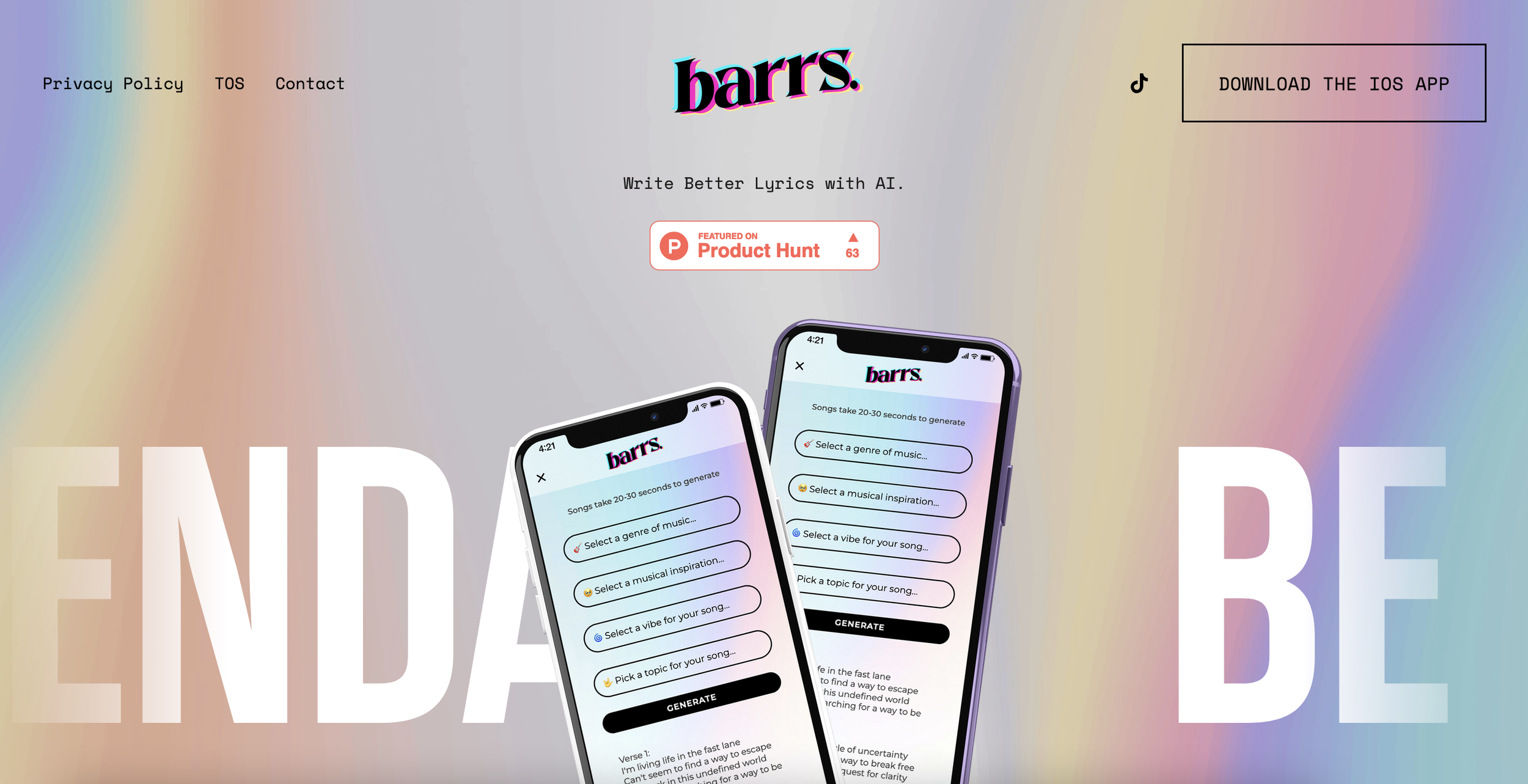Case Studies
More in-depth information on projects I have worked on.
Case Study No. 1
chefff ai recipe generator
Case Study: Chefff; Crafting an AI-Powered Recipe App
Chefff is not just another recipe app—it’s an AI-powered, personalized cooking assistant designed to streamline meal planning. I created Chefff to fill a gap in the market, where most recipe apps failed to offer flexibility, personalization, and adaptability to user needs. Here’s the process behind how Chefff came to life.
The Problem
In the early stages, I identified three main pain points with existing recipe apps:
-Inflexible Recipe Options: Users were stuck with static ingredients and recipes that didn’t account for their unique needs.
-Overwhelming Choices: Too many options without enough personalization made it difficult for users to choose recipes quickly.
-Dietary and Ingredient Constraints: Apps rarely adjusted recipes for users with allergies or specific diets, leading to frustration.
The Solution – Chefff
Chefff was created to deliver an intelligent solution that adapts to each user. The app provides personalized recipes based on their dietary preferences, what’s in their kitchen, and past meals they enjoyed.
How It Works
AI-Powered Personalization
The heart of Chefff lies in its AI. I developed a machine learning algorithm that:
- Analyzes user preferences, past cooking habits, and taste preferences.
- Automatically adjusts recipes based on dietary needs or available ingredients.
- Suggests alternative ingredients in real time, allowing users to cook with what they have on hand.
Ingredient-Based Search
Users input the ingredients they have in their fridge, and Chefff provides tailored recipe suggestions. No more worrying about missing key ingredients—Chefff adapts, ensuring minimal waste and maximum convenience.
Real-Time Adjustments
Chefff offers dynamic recipe recommendations, adapting portion sizes and ingredient quantities automatically based on user inputs. It also provides detailed substitution options and explains the impact on flavor.
Development Journey
Step 1: Market Research & Idea Formation
Before developing Chefff, I explored various recipe apps to understand their shortcomings. Feedback from users revealed a consistent demand for flexible recipe options that catered to dietary restrictions, personal tastes, and ingredient availability.
Step 2: Building the AI
The app's core functionality lies in its AI engine. I used natural language processing (NLP) to parse recipes and user feedback and machine learning to fine-tune recommendations over time.
Step 3: Data Collection & Recipe Sourcing
I curated a massive recipe database by partnering with chefs, food bloggers, and using publicly available recipe datasets. Each recipe was tagged with cooking times, ingredient lists, and dietary filters, allowing the AI to provide accurate and personalized suggestions.
Step 4: Testing and Refinement
To ensure the AI was accurate, I launched a beta version, collected feedback, and refined the app’s functionality. I focused on improving user experience and making the platform intuitive, based on feedback from test users.
Key Features
Ingredient Flexibility: Users can input ingredients they have at home, and Chefff generates relevant recipe suggestions, reducing food waste.
Dietary Customization: Chefff accommodates various diets (vegan, gluten-free, keto) by automatically filtering recipes and suggesting ingredient alternatives.
Real-Time Adjustments: The app allows users to scale recipes up or down based on portion size, ensuring accurate ingredient quantities every time.
Challenges & Solutions
1. Data Quality: Ensuring that recipe data was rich and consistent was a challenge. I solved this by applying rigorous filtering and validation methods to ensure all data used by the AI was reliable.
2. AI Training: Building a model that could intelligently recommend alternatives required months of testing and refinement. I relied on user feedback loops to consistently improve Chefff’s recommendations.
3. User Experience: Simplicity was key. I focused on building a clean, easy-to-navigate interface that users could pick up quickly without needing extensive tutorials.
Results
Chefff successfully launched with rave reviews, particularly for its flexibility and ease of use. Early adopters praised the app’s ability to make cooking simpler and more intuitive. Users reported significantly reduced food waste, better recipe discovery, and a newfound ease in planning meals that catered to their unique tastes and diets.
Conclusion
Chefff represents the intersection of artificial intelligence and everyday life. By focusing on personalization and real-time adaptability, Chefff has changed how users approach meal planning, offering an intuitive and enjoyable cooking experience.
The next generation in recipe apps powered by AI. This iPhone app ranked #4 as the Health and Fitness, Product of the Week on ProductHunt.
Case Study No. II
BARRS AI LYRIC GENERATOR
Case Study: Barrs – Crafting an AI-Powered Lyrics Generator
Barrs is an innovative AI-powered lyrics generator app designed to help artists, producers, and songwriters overcome creative blocks. I developed Barrs to revolutionize the creative process for musicians, offering intelligent lyric suggestions that cater to a wide variety of genres, moods, and themes. This case study outlines the journey of how Barrs came to life and became a go-to tool for music creators.
The Problem
In the music industry, writer’s block is a common issue, especially for songwriters trying to maintain consistent creativity. Based on early research, the following pain points became evident:
-Creative Block: Artists often struggle to come up with fresh lyrics, especially when working on tight deadlines.
-Lack of Inspiration: Many musicians feel uninspired when trying to craft meaningful lyrics that resonate with their audience.
-Time Constraints: In fast-paced industries, artists don't have the luxury of spending weeks crafting lyrics for a single song.
The Solution – BARRS
Barrs was built as an AI solution that provides artists with real-time, adaptive lyrics suggestions, helping them break through creative barriers. The AI understands context, mood, and specific user inputs, allowing musicians to generate lyrics tailored to their style.
How It Works
AI-Generated Lyrics
At its core, Barrs uses natural language processing (NLP) and machine learning algorithms to generate relevant, high-quality lyrics. Here’s how it operates:
- Contextual Understanding: Artists provide Barrs with a few words, themes, or phrases, and the AI generates lyrics that match the desired mood, genre, and flow.
- Genre and Mood Adaptability: Barrs adjusts its suggestions based on the genre (e.g., hip-hop, pop, R&B) or mood (e.g., upbeat, melancholic, romantic), offering customized lyrical content for any creative project.
- Dynamic Learning: The AI continuously learns from user interactions, improving over time to deliver more refined and personalized lyrics.
User Customization
Barrs allows users to tailor the tone and complexity of lyrics. For instance, if a user is writing a rap song, they can ask Barrs to suggest bars with intricate rhyme schemes and punchlines. For a ballad, the AI can generate more emotional, heartfelt lyrics.
Development Journey
Step 1: Market Research & Idea Formation
Before diving into development, I conducted surveys and interviews with musicians, producers, and songwriters. It became clear that many creatives struggled with consistency when it came to lyric writing. They needed a tool that could offer inspiration when the ideas weren’t flowing, without sacrificing quality.
Step 2: Building the AI
I developed Barrs with the goal of it being more than just a random word generator. The AI engine was built to: Understand linguistic patterns and rhyme schemes. Adapt to various genres, using data sourced from real-world lyrics. Offer meaningful, cohesive suggestions that feel human-like in flow and style.
Step 3: Data Collection & Recipe Sourcing
Barrs' intelligence stems from being trained on thousands of song lyrics across multiple genres. I curated and cleaned large datasets of lyrics, ensuring they were labeled by genre, tone, and mood. This allowed Barrs to offer highly contextual suggestions instead of generic lines.
Step 4: Testing and Refinement
The user interface was designed with simplicity in mind. Musicians can input themes or keywords, adjust sliders for mood and genre, and within seconds, receive multiple lyric suggestions that fit their creative needs. The goal was to make the process feel natural and intuitive.
Key Features
Real-Time Lyrics Generation: Barrs produces complete lyrical verses in seconds, speeding up the songwriting process. Genre-Specific Adaptation: From rap battles to soulful ballads, Barrs understands the nuances of different musical styles and adjusts its outputs accordingly. Collaborative Creativity: Barrs offers multiple lyric variations so artists can mix and match ideas or use them as a base to spark further creativity. Rhyme and Flow Optimization: The AI is trained to produce lyrics that fit seamlessly into different musical structures, helping users maintain the flow and rhythm of their songs.
Challenges & Solutions
1. Ensuring Lyrical Authenticity: One challenge was ensuring that the AI-generated lyrics felt natural and avoided generic or repetitive phrases. I solved this by incorporating a diverse dataset and regularly updating Barrs with new lyrics and structures.
2. Genre-Specific Nuances: Certain genres, like rap and country, have distinct stylistic features. To ensure Barrs was accurate, I trained the AI with genre-specific linguistic patterns and cultural references.
3. Balancing Creativity with AI Constraints: While AI can offer incredible suggestions, it lacks the emotional depth of a human songwriter. To counter this, I ensured Barrs was a collaborative tool, providing ideas that artists can expand on, rather than fully finished lyrics.
Results
Since its launch, Barrs has been adopted by a range of artists, from independent musicians to professional songwriters. Feedback has been overwhelmingly positive, with users praising Barrs’ ability to break through writer’s block and offer fresh ideas during creative slumps. Some key outcomes include: Reduced Time to Write Songs: Users report that Barrs helps them craft lyrics in half the time it used to take, allowing them to focus on other aspects of music production. Increased Creativity: Artists have shared that Barrs' suggestions often take their work in new and unexpected directions, sparking inspiration where they previously felt stuck. High-Quality Lyrics: Many users have integrated Barrs' suggestions directly into their songs with minimal modification, showcasing the AI’s ability to produce professional-grade content.
Conclusion
Barrs is more than just a tool—it’s a creative partner. By blending the power of AI with the nuanced world of songwriting, Barrs empowers artists to overcome creative hurdles and produce meaningful, engaging lyrics in less time. As the app continues to evolve, it remains committed to enhancing the artistic process, ensuring that creators never run out of ideas when they need them most.
An iPhone AI product launched on ProductHub that hit #14 for the month. With hundreds of downloads the first day of launch.


